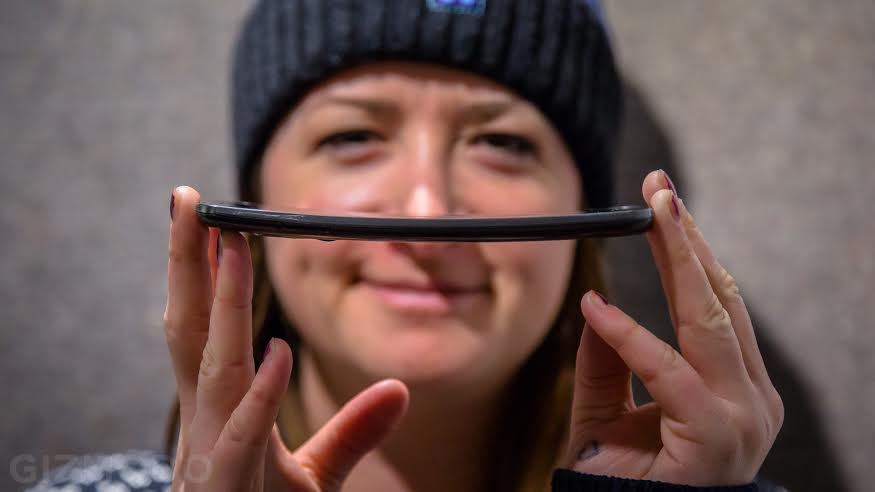The one thing you can say for certain about the LG G Flex is that it commands attention, mostly because it is curved. Beyond that, the questions start flooding in. Why is it curved? Why is its screen so mediocre? Why would you want to buy it? Unfortunately, after using the phone for several days, I still don’t have an answer.
What Is It?
LG’s 6-inch phone with a curved screen. The curve isn’t just a selling point, it’s the selling point, as if you’re supposed to say: Sure, this phone might not have a great camera, but LOOK AT ITS CURVES FOR THE LOVE OF GOD.
Why Does It Matter?
If the prevailing curves at CES, mostly in the form of beautiful, enveloping TVs. But curves are not exclusive to televisions. Increasingly, phones have ’em too. Whether or not they continue to depends on the success of products like the G Flex.
Design
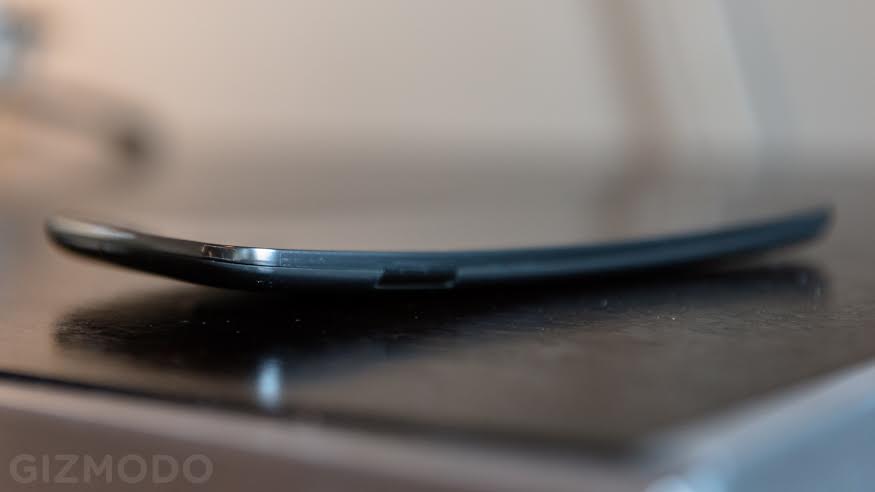
For starters, it’s massive. Actually, it’s too massive, in a way that feels clunky. Six inches is a big phone regardless, but the curve adds depth to length. I found myself absent-mindedly rocking it back and forth on my desk, like a mini balance board for my hands. Its curve had me worried I was going to break it when I flex it (it flexes, which makes sense, given) or when it’s in my pocket. It never did though; the G Flex is deceptively durable.
Take away the curve, and the G Flex looks like a lot of other large Android smartphones. Were it slightly smaller and flat it’d be a ringer for its LG cousin, the G2. From the front, it’s shaped almost identically to the Samsung Galaxy S4, and it has a similar glossy plastic back. It also lacks any kind of physical buttons, except for the volume and power buttons on the back. This placement takes some getting used to, although the payoff for when you are used to it isn’t particularly clear.
Using It
The curved screen is supposed to make calls clearer and holding your phone against the curve of your cheek more comfortable (which sounds like something out of a gadget romance novel). That’s the theory, anyway. In reality, the sound doesn’t seem to be affected all that much. If there’s a difference, it’s imperceptible to my ears.
Holding the G Flex to your face is awkward, too, thanks to that 6-inch screen. To put it into context, the G Flex is slightly bigger and heavier than the Samsung Galaxy Note III. You almost feel like you’re making a call into a turkey leg you bought at the Renaissance fair.
The one benefit to the curve that actually seems to work is that it makes the G Flex less reflective that most smartphones you’re used to. It really does reduce glare. On a rare sunny January day, I killed some time outside a coffee shop playing Temple Run on the G Flex. This is something that on a bright day would ordinarily be impossible because of the sun, but I could actually manage ok! I still didn’t beat my high score, though.

Beyond that though, the display is not great. The Flex has a paltry 224 pixels per inch display, a far cry from retina-quality and noticeably less than any flagship you can find. It’s grainy enough that what should be a crystal-clear image looks almost blurry.
The phone is also “self-healing”, or more resistant to scratches, which it actually seemed to be after several days in and out of pockets, purses, and backpacks. I deliberately scratched it with the sharp edge of a bobby pin and it didn’t pick up any scuffs.
The Flex is also running a build of Jelly Bean that is completely out of date — Android 4.2.2, which came out all the way back in the halcyon days of 2012. 2012! It’s also bogged down with LG’s proprietary apps, which you don’t need and will never use.
You can “knock” to wake the phone up, as you could on the LG G2. But as with the G2, the feature only works about a third of the time. The Flex has home, back, and menu selection on the bottom of its giant screen, but it has left Android multitasking features out, in favour of a bunch of weird LG-specific gestures, like swiping applications to the side with three fingers to “save” it. That doesn’t work well pretty much ever, provided that you want to use this feature you don’t need and won’t remember in the first place. The Flex also boasts LG Voice Mate, a voice control system that is unreliable at best. It had me missing all the goodness of Google Now.
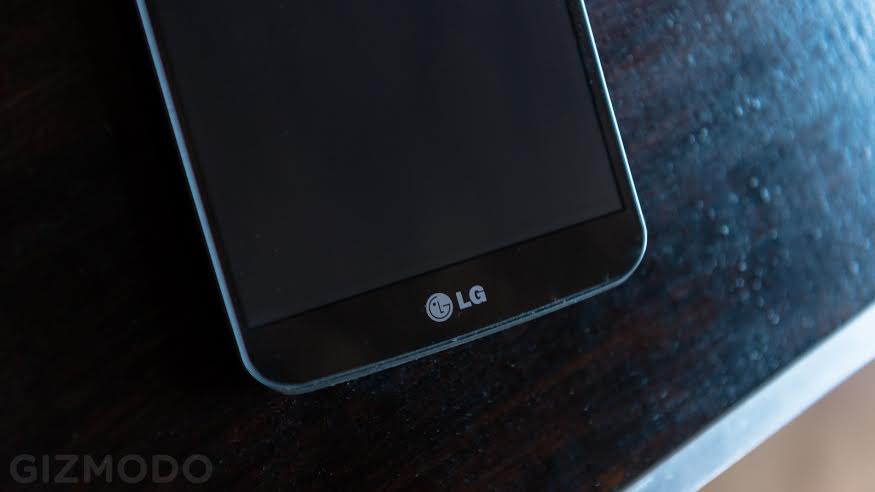
That being said, the phone’s got a decent amount of zip, thanks to its Snapdragon 800 guts. There was no lag playing games. It handled several rounds of Temple Run 2 without a hiccup.
The G Flex’s 13MP rear camera is also a pretty lackluster. It’s fast enough, it’s good enough, but it’s just not enough to stand out above any other of its Android cohorts.
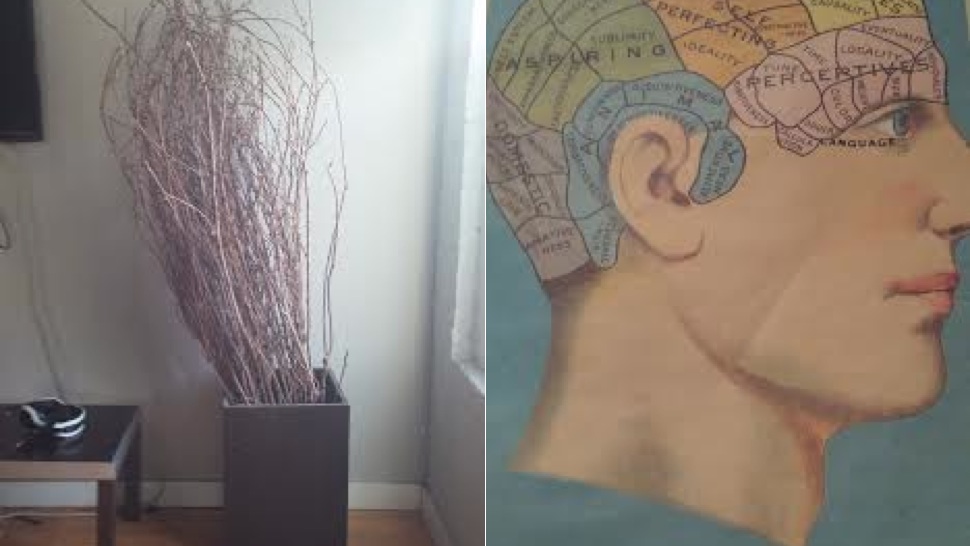
Where the Flex shines the most is battery life, which makes sense given its underpowered display. With a 3500mAh battery, the Flex gets the same kind of battery life as that of the Droid Maxx. That’s nearly two days on a single charge. Even with normal use — which for me is basically having the phone sewn to one hand while I constantly refresh Twitter — the Flex gave me about two days worth of juice.
Like
The LG G Flex is a phone designed to hug the contour of your butt when placed in your back pocket.

The reduced glare on the screen is also nice, especially in that it’s something you don’t think about until you’re sitting outside in the sun and having trouble reading a text.
No Like
It’s big enough to bring back memories of the Zack Morris brick phone. The curves would be slightly more forgivable if the phone itself were smaller and less cumbersome. Six inches is just way too big for a phone. Additionally, as with the LG G2, the volume and power buttons are on the back, rather than the side. It is still strange placement. It is still not good.
The screen is pitiable. You hit a certain point with retina and beyond displays where you you don’t possibly need any more pixels. The G Flex falls well below that point.
It is also expensive! The G Flex is $999 RRP in Australia. No matter how you slice it, that’s way too much. The Nexus 5, for comparison, is twice the phone at about half the price.
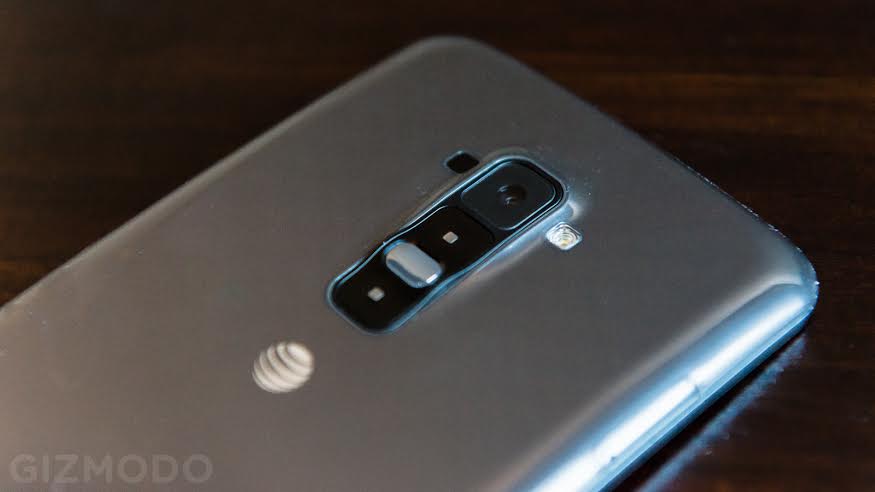
Should You Buy It?
Hard pass. The main reason for the G Flex’s existence seems to be that people don’t buy new stuff if you don’t make new stuff. At its high price, you’re also paying a whole lot for what is essentially a gimmick. I can’t imagine carting this around for two years.
Don’t get me wrong. The phone is fine! Unwieldy in its size, but it’s fine. It’ll do what you need it to do, and it’ll do it for a couple days on one charge. It’s just not an extraordinary device, it’s awkward to use, and you shouldn’t buy it unless you’re truly desperate for a conversation piece in your pocket..
LG G Flex
• OS: Android 4.2.2 (Jelly Bean)
• CPU: 2.26GHz quad-core Snapdragon 800
• Screen: 6-inch 1280×720 Curved POLED, Real RGB, 245 ppi
• RAM: 2GB
• Storage: 32GB
• Camera: 13MP rear / 2.1MP front
• Battery: 3500mAh Li-Po (3400 on T-Mobile)
• Dimensions: 160mm x 82mm x 7.9mm/8.6mm
• Weight: 176g
• Price: $999 RRP in Australia
